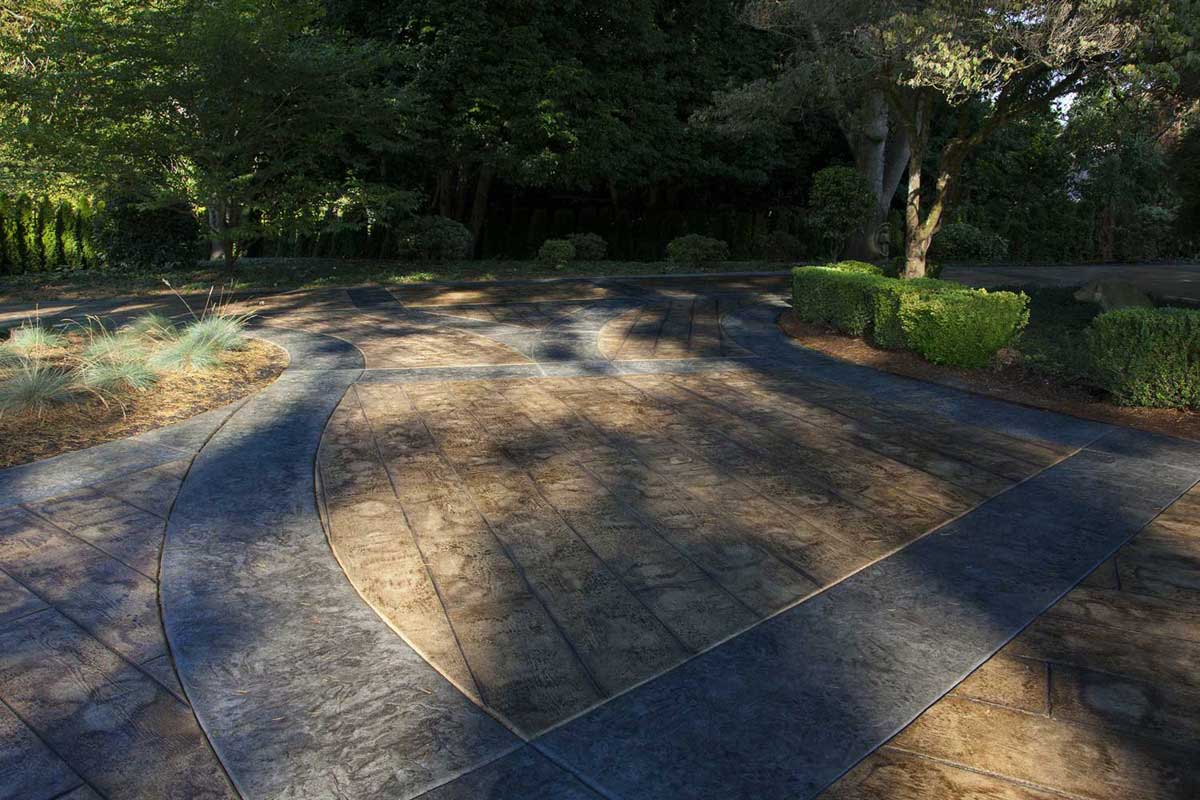How to Stamp Concrete With Unique and Natural Colors
Have you ever heard the complaint that stamped concrete looks fake? Even with the best and most detailed tools, stamped concrete driveways, patios, and sidewalks, textured concrete can look artificial if it lacks the proper detailing and colors. Read more as we discuss the best practices for stamped concrete coloring.

Textures and Patterns
When considering how to stamp concrete with realism, a good stamp or texture is necessary. Not only should you find stamps that are easy to use, they need to be realistic textures. Ideally, the textures are based on or cast from real materials. This is where stamps like Brickform’s Paladiano line are exceptionally valuable. With hundreds of unique texture and patterns, Paladiano stamps are the most realistic and thoughtfully designed in our vast catalog.
The stamper is responsible for using the tools correctly. Blemishes, like squeeze ups or untextured areas, are common giveaways that make stamped concrete look fake. The finished product should be free of mistakes like this. A skilled professional who knows how to stamp concrete can minimize these, but even the best stamper must go back and do touch up work. Proper placement of the stamps is also important. Arrange the tools as to avoid repeat patterns and other telltale signs of “fakeness” associated with bad stamped concrete jobs.
Base Colors and Highlights
Monochrome stamped concrete has a tendency to look artificial. Standard methods for how to stamp concrete usually include a powdered release that adds some color variation. More base color and accent release colors can be used for subtle, natural highlights. The simplest way to do this is to use multiple colors of release. This adds multiple light color casts and highlight colors.
For an even more impressive stamped colored concrete palette, consider using multiple base colors. Start with an integral color. This will act as the primary color in the concrete. Streaks of color hardener, broadcast during finishing, create natural looking color variation. Choose similar colors for subtle shifts like one would see in stone. Complimentary and contrasting colors can be used more dramatically to create intense marbling. When learning how to stamp concrete with these additional colors, it is important to use a subtle touch.
Sealers and Finishes
The question isn’t just how to stamp concrete or color stamp concrete. Sealing the concrete is important for a variety of reasons. First, choosing the right sealer is vital to protecting and maintaining the concrete. Quality decorative sealers resists staining, repel water, and reduce the effects of moderate traffic. Sealers also have the ability to enhance and deepen color.
Remember to choose sealer carefully. Many decorative sealers add a high level of gloss. This may be desirable, but it can also make the concrete look unnatural. In these cases, consider using a lower gloss or satin finish sealer. That will have the same protection and color enhancing effects without creating a super shiny surface. A de-glossing additive can also be used on a high gloss sealer to the same effect.
Mock Ups
When learning how to stamp concrete, mock ups and test pours are taught as best practice. This is especially true when considering how to stamp concrete with unique and and natural colors. The amount of finesse and artistry involved in stamping with natural colors, makes it more important to create representative samples before a job.
Techniques and Methods
From a technical standpoint, stamping concrete with unique and natural colors does not require specialty skills. If you know how to stamp concrete with a good degree of competency, natural and unique colors should be achievable. For best results, look at the natural materials you wish to copy. See what kinds of colors and variations exist in nature. Then practice and do your best to replicate it.
See More

